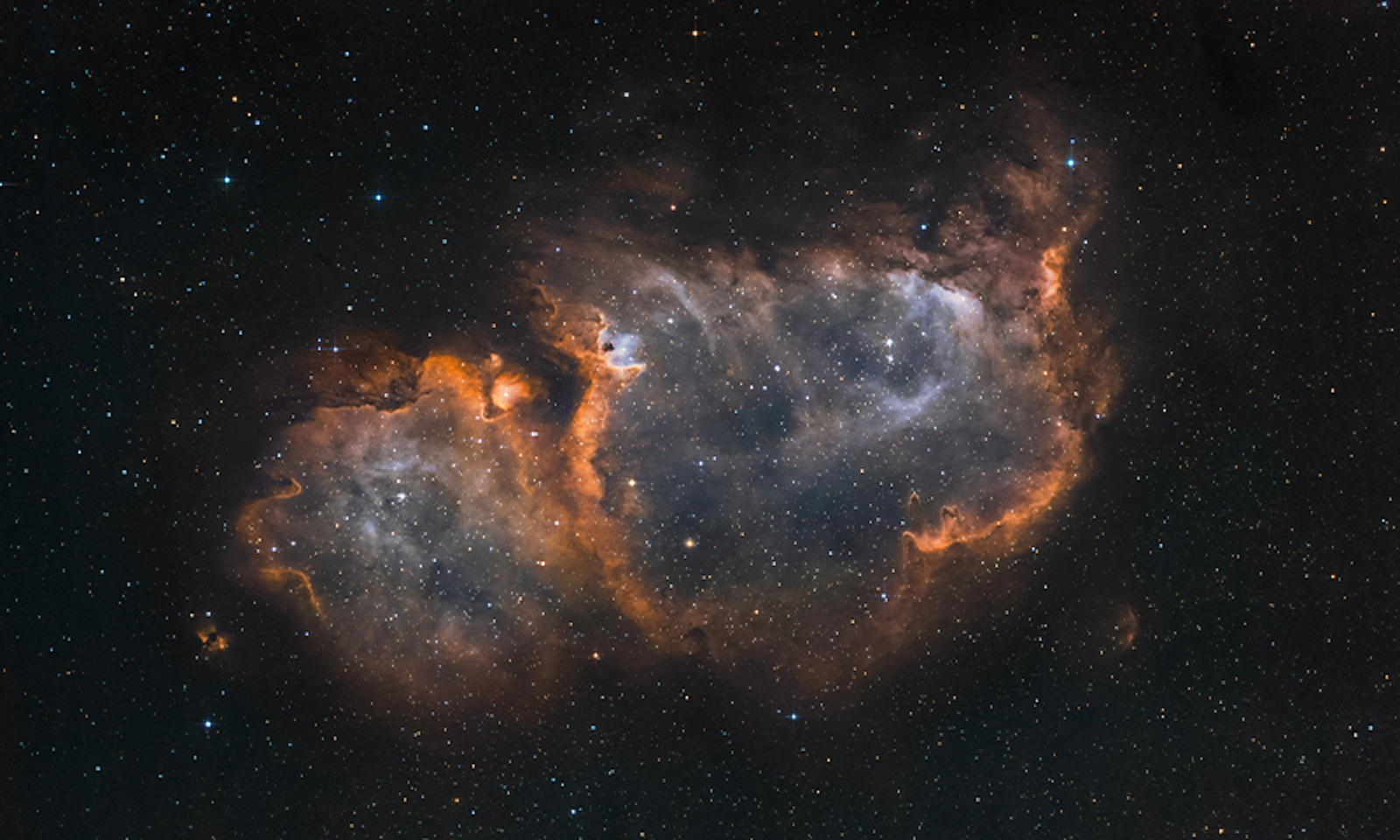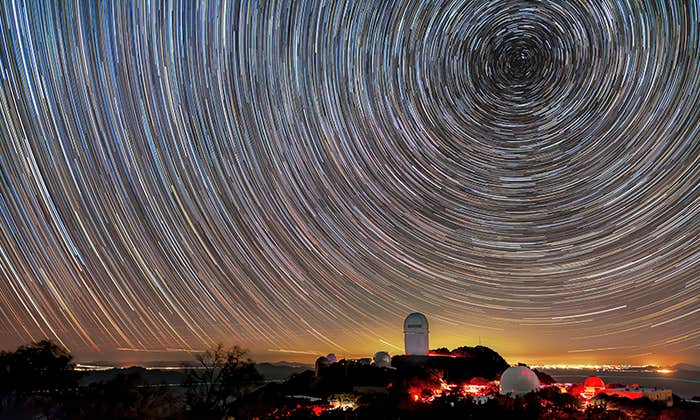Please excuse me for being excited, but this hasn’t happened for more than four decades: Physicists have found a new approach to solving a problem which is almost a century old—how to combine quantum physics with gravity. The new idea comes from Johnathan Oppenheim, a professor of quantum theory at University College London, and he has dubbed it “Post-Quantum Gravity.” I wrote about his new proposal in Nautilus last month.
Now Oppenheim and his collaborators are saying that their idea doesn’t just reconcile quantum physics and gravity, it also explains dark matter and dark energy. “Folks, something seems to be happening,” Oppenheim wrote on X (formerly known as Twitter), sharing his research. “We show that our theory of gravity … can explain the expansion of the universe and galactic rotation without dark matter or dark energy.”
The problem that Oppenheim set out to solve is that quantum physics and gravity don’t get along with each other very well. Quantum physics is what we call a non-deterministic theory. It has a random element, built-in uncertainty, and limits what you can do and know. We often say that quantum particles can be in two places at once, but really what the math shows is that it doesn’t make sense to say they are in any particular place. They just don’t have places.
Gravity on the other hand is described by Einstein’s theory of general relativity. It assigns a time and place to everything. It is deterministic, the future follows from the past, and the only uncertainty it has is that which stems from our own lack of knowledge. It does not cooperate with the non-deterministic behavior of quantum particles.
The alternative explanation to dark matter is that the law of gravity needs to be changed.
There have been many attempts to unify the two and create what is known as a theory of quantum gravity. The best-known approaches give quantum properties to gravity and include string theory, loop quantum gravity, and asymptotically safe gravity. The path less taken is to leave gravity a non-quantum theory—a “classical” theory as physicists say—or to change something about quantum physics.
An example is Roger Penrose’s idea that gravity is the reason why we never observe large objects being in two places. This and similar ideas have not worked out all that well, primarily because random jumps of particles in quantum physics describe our observations well, and yet gravity can’t accommodate them.
Oppenheim’s new approach overcomes this problem by leaving gravity a non-quantum theory, but giving it a random element. This randomness of post-quantum gravity doesn’t come from anything else. It’s a fundamental ingredient—the starting point. This is just like how the randomness of quantum mechanics does not come from anything else—it’s fundamental, a starting point, just a property of nature.
The innovation that Oppenheim brought is that he found a way to combine the mathematics of both types of randomness into one framework. In this post-quantum theory, gravity remains non-quantum, and particles remain quantum. However, these two sectors communicate with each other because particles have gravity and that gravity in return influences the particles. In Oppenheim’s theory, this works without contradictions because these two randomnesses fit together. But in return, this subtly changes both quantum physics and gravity.
In a recent paper, which has not been peer-reviewed, Oppenheim and his co-author Andrea Russo, a graduate student at University College London, say that this randomness changes the law of gravity such that it does away with the need for both dark matter and dark energy.
Dark matter and dark energy are terms that astrophysicists have given to two hypothetical constituents of the universe. Neither has ever been directly observed; astrophysicists have merely indirectly inferred their presence from their gravitational effects. They have added dark matter to explain, among other things, why galaxies rotate faster than expected and gravitational lenses are stronger than expected. They added dark energy to explain why the universe doesn’t just expand, but the expansion also gets faster—no normal type of matter or energy could make that happen.
The alternative explanation to dark matter and, possibly, also dark energy is that the law of gravity needs to be changed. It wouldn’t have to be changed at large distances—that doesn’t work very well because galaxies come in many different sizes and we observe noticeable effects of dark matter at different distances from the center. Rather, it turns out that the best way of modifying the law of gravity is to change it when the acceleration acting on a star is very small—exactly what Opppenheim and Russo say they find in their post-quantum gravity.
Problem solved? Well, maybe, but I think it won’t work.
This modification of Einstein’s gravity at small accelerations is known as Modified Newtonian Dynamics, MOND for short. The reason this modification at small acceleration can appear as if there were dark matter is that the acceleration, on average, depends on the strength of gravity. If you are near a planet or a sun, then you experience a noticeable pull of gravity from those heavy objects. If you interpret that as a force, then that gives rise to an acceleration. The farther away you are from heavy objects, the smaller the acceleration.
However, the overall gravitational pull coming from an entire galaxy gets smaller the farther away a star is from the galactic center because most of the mass of the galaxy sits in the center. It turns out that if you assume that gravity gets stronger at small accelerations, then that can explain the observations attributed to dark matter in galaxies. This is, in a nutshell, the idea of MOND.
Oppenheim now says that when he and his colleagues looked at the changes to the law of gravity from the gravitational randomness, they saw a similar behavior: The smaller the acceleration of an object, the more it is affected by the randomness inherent in gravity. They derive an equation that is similar to Newton’s law of gravity for the Newtonian gravitational potential, which is the quantity from which physicists derive the gravitational force. However, it is not the exact same equation, and its solutions have unusual contributions. They show that these extra contributions seem to be similar to what MOND offers: They make galaxies rotate faster. And for good measure, one of these contributions, they say, looks like dark energy. MOND itself does not account for dark energy, so this is quite a remarkable achievement.
Though I want to caution that in this most recent work they only look at galaxies, so they have not demonstrated that the quantity they identify as the simplest type of dark energy (a cosmological constant) indeed causes the universe to expand. For this, they refer to another “manuscript in preparation,” so I guess we will hear more about this in the future. However, from my own experience, getting dark energy to come out right is not all that difficult. (I, too, have a theory which explains both dark matter and dark energy, it’s just that no one cares about it.)
Problem solved? Well, maybe, but—call me a grumpy old woman if you must—I think it won’t work.
The reason is that the equation they get is too simple. I suspect that it works for one galaxy at a time, but it will not work for a set of many at once. This is because astrophysicists have observed that if we combine data from many galaxies, then some observable properties—such as the rotational speed and brightness—are correlated with each other. MOND explains these correlations; dark matter does not. To me this is the great appeal of MOND over dark matter. But the equations which seem to follow from post-quantum gravity do not have the right properties to explain these relations. That is to say, I suspect that as they investigate their equations further, they will find that they don’t work as desired.
Of course I could be wrong. And so for me this is a win-win situation. Either I am right, or I am wrong and we are witnessing the birth of a theory that delivers what many of us have dreamed of. ![]()
Lead image: Marcel Drechsler / Shutterstock
































